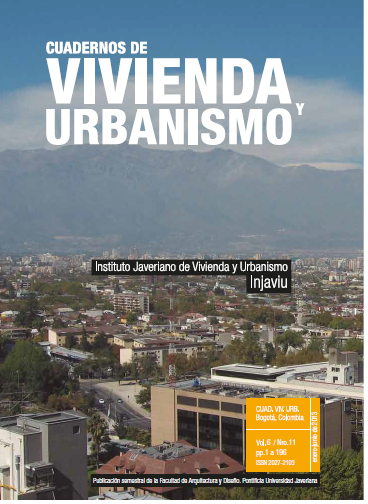Resumen
Este artículo define la motorización tardía de América Latina como el arribo desfasado a los patrones de movilidad y dispersión urbana caracterizados por la masificación en el uso del auto privado. Evidencia su punto de inflexión en el momento en que los países en desarrollo pasan a ser los principales centros de producción y consumo de autos privados. Ubica su correspondencia histórica con un modelo de desarrollo agotado en los países desarrollados, cuyos mecanismos autopoiéticos entre ciudades dispersas, el intervalo del petróleo y la difusión del automóvil están bajo severo cuestionamiento. Pretende motivar el debate académico, contribuyendo al estudio de la problemática entre modos de movilidad y urbanizaciones iniciado por Vasconcellos, especialistas de la Corporación Andina de Fomento (CAF), Lizárraga y otros. Se ofrece una investigación reflexiva hipotética, con un diseño deductivo-inductivo, técnicas cualitativas de observación participante y entrevistas a un grupo de actores productivos, políticos y sociales, realizadas en México, Brasil, Colombia y Argentina.
Esta revista científica se encuentra registrada bajo la licencia Creative Commons Reconocimiento 4.0 Internacional. Por lo tanto, esta obra se puede reproducir, distribuir y comunicar públicamente en formato digital, siempre que se reconozca el nombre de los autores y a la Pontificia Universidad Javeriana. Se permite citar, adaptar, transformar, autoarchivar, republicar y crear a partir del material, para cualquier finalidad (incluso comercial), siempre que se reconozca adecuadamente la autoría, se proporcione un enlace a la obra original y se indique si se han realizado cambios. La Pontificia Universidad Javeriana no retiene los derechos sobre las obras publicadas y los contenidos son responsabilidad exclusiva de los autores, quienes conservan sus derechos morales, intelectuales, de privacidad y publicidad.
El aval sobre la intervención de la obra (revisión, corrección de estilo, traducción, diagramación) y su posterior divulgación se otorga mediante una licencia de uso y no a través de una cesión de derechos, lo que representa que la revista y la Pontificia Universidad Javeriana se eximen de cualquier responsabilidad que se pueda derivar de una mala práctica ética por parte de los autores. En consecuencia de la protección brindada por la licencia de uso, la revista no se encuentra en la obligación de publicar retractaciones o modificar la información ya publicada, a no ser que la errata surja del proceso de gestión editorial. La publicación de contenidos en esta revista no representa regalías para los contribuyentes.


